Penning’s hop crop offers brewers local flavor



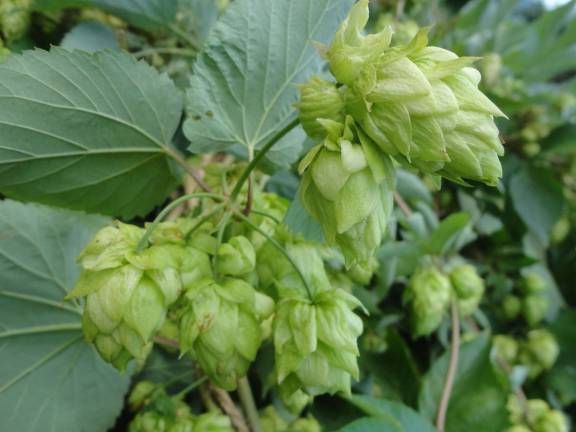
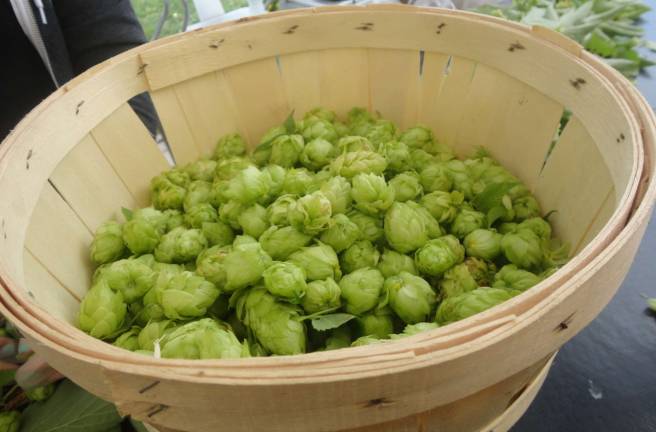

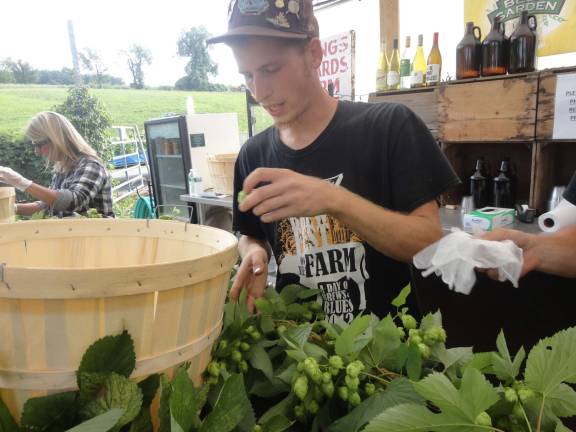
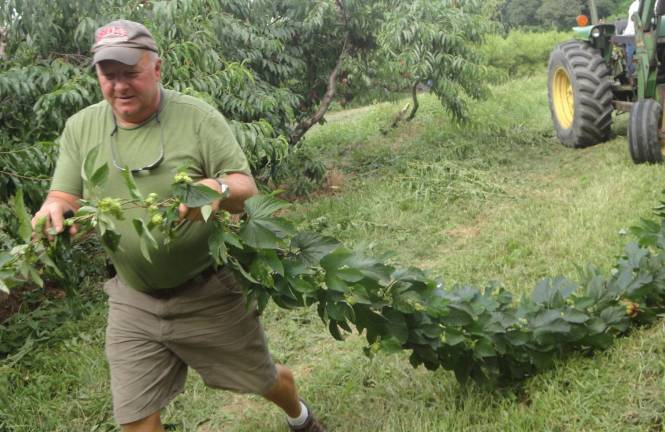

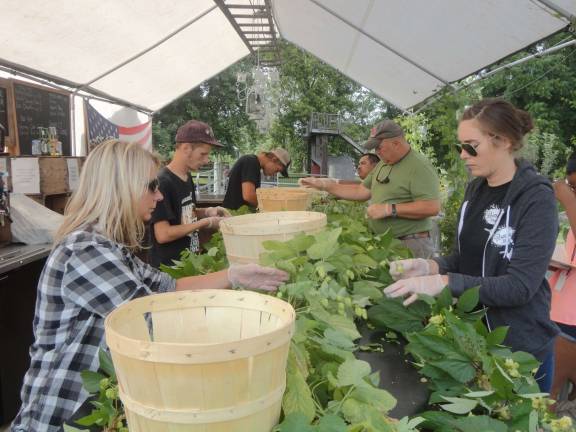
WARWICK — With their inclusion of a one-acre hop field on their farm, Pennings’ Orchard hopes to help bring New York State back to the glory days of hop production while catering to the local food movement.
In the late 1800s, New York produced more than 80 percent of the nation’s hops and was the second largest producer in the world behind only Germany.
In the early 1900s, however, diseases such as powdery mildew devastated the state’s hop farms, making them unable to produce a profitable crop after the repeal of Prohibition in 1933, and the West Coast became the country’s official supplier.
Six ounces = six gallons
Now, Cornell University’s Cooperative Extension and the Northeast Hop Alliance are teaming up to change that demographic by hosting seminars on hop farming throughout the state.
Jill Pennings brought a magazine ad for such a seminar to her son, Steve Pennings Jr., who had recently begun brewing his own beer. Steve Jr. jumped at the chance, and now Pennings’ Orchard is in their second year of commercial hop production. “As far as I know,” Steve Jr. said, “we’re the only commercial production in Orange County.”
It takes about three years for the hop plants to fully mature, Steve Pennings Sr. said, so this crop is still in its infancy, “but coming along nicely in their second year.”
The ultimate goal of a hop yard is to get 1,000 pounds of flowers per acre, he added, but this year’s crop, due to its immaturity, is anticipated to yield about 2,000 ounces— “give or take a thousand.”
About three ounces of hops are required to home brew a six-gallon batch of beer, Steve Jr. said, so Pennings’ will have enough crop to supply some of their target audience this year regardless of yield.
The locavore movement
As eating local is becoming more important to consumers, so is drinking local.
“Brewers are going to want to make a beer with hops from right down the road in Warwick,” Steve Jr. said.
Proving his point, Chester’s Rushing Duck Brewing Co. has purchased a quantity of Pennings’ hops to brew a variation of its Naysayer pale ale, which will be called Naysayer Pennings.
A 15-barrel batch will be brewed in late August and the brewery says “it should be ready” for Pennings’ Sept. 7 Brew Fest on the Farm. In addition to Pennings’ Harvest Grill, the beer will also be available at Rushing Duck’s mainstays, Touch Base and Christopher’s Bistro, both in Chester.
“We’re very excited,” Rushing Duck’s Nikki Cavanaugh said. “This is our first time using dry, whole-leaf hops.” Generally, she added, the brewery uses pelletized hops for their brews.
While the cost of the locally grown hops is slightly higher, Cavanaugh added, they save in the long run by cutting out shipping, which is the most expensive cost involved with getting the ingredient from the west coast or overseas, as the product must stay refrigerated after it is processed.
Looking forward
Pennings’ Orchard currently has five varieties of hops in their field—Centennial, Willamette, Nugget, Brewer’s Gold and Cascade – each of which impart a distinct flavor and aroma to the beer they are brewed in.
Not content with growing just one ingredient, the Pennings are also thinking about growing barley for brewers. “People want a totally New York grown beer,” Steve Jr. said.
With New York State’s newly created farm brewer’s license, which is obtainable if a farm brewery grows a certain percentage of its beers’ ingredients, the Pennings might be able to please even the most die-hard locavore before too long.
“Ideally, we’ll have an entirely Pennings’ beer down the road,” Steve Sr. said.
By Scott Baker